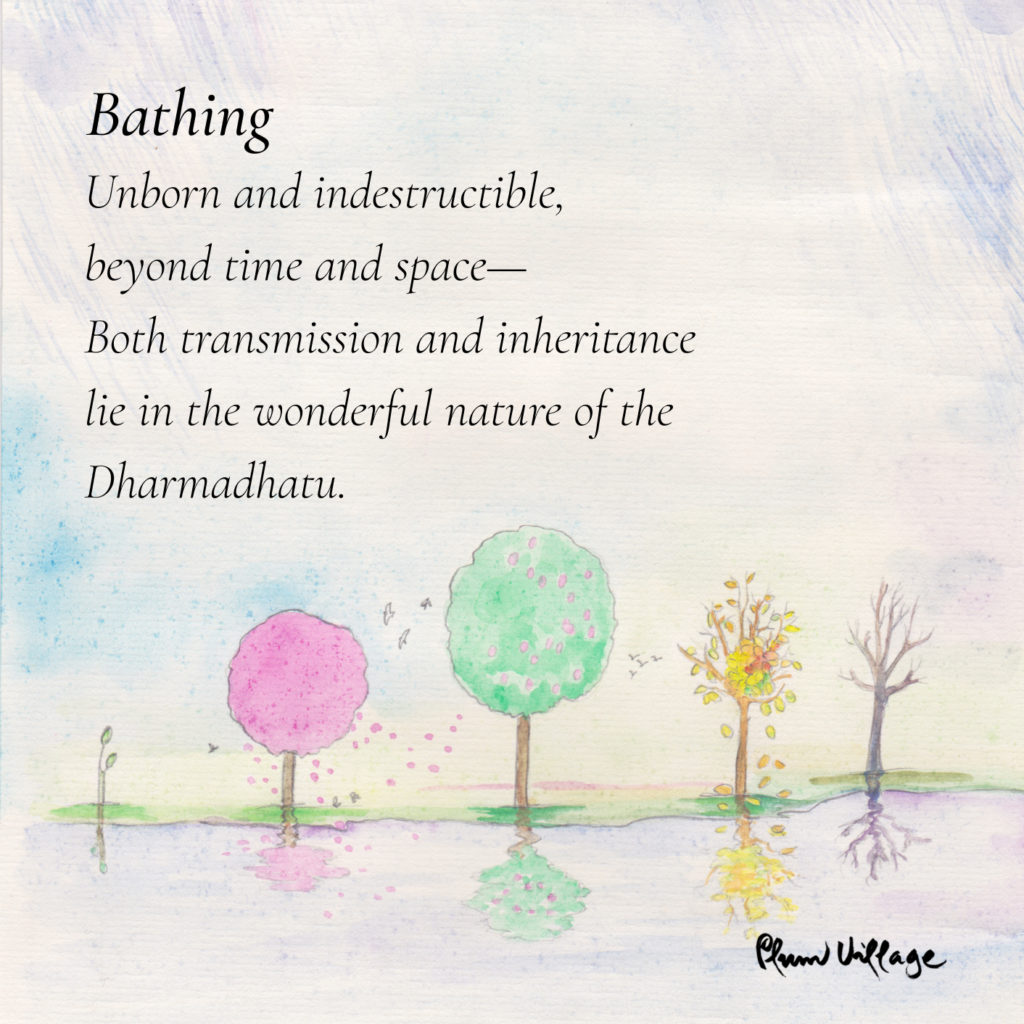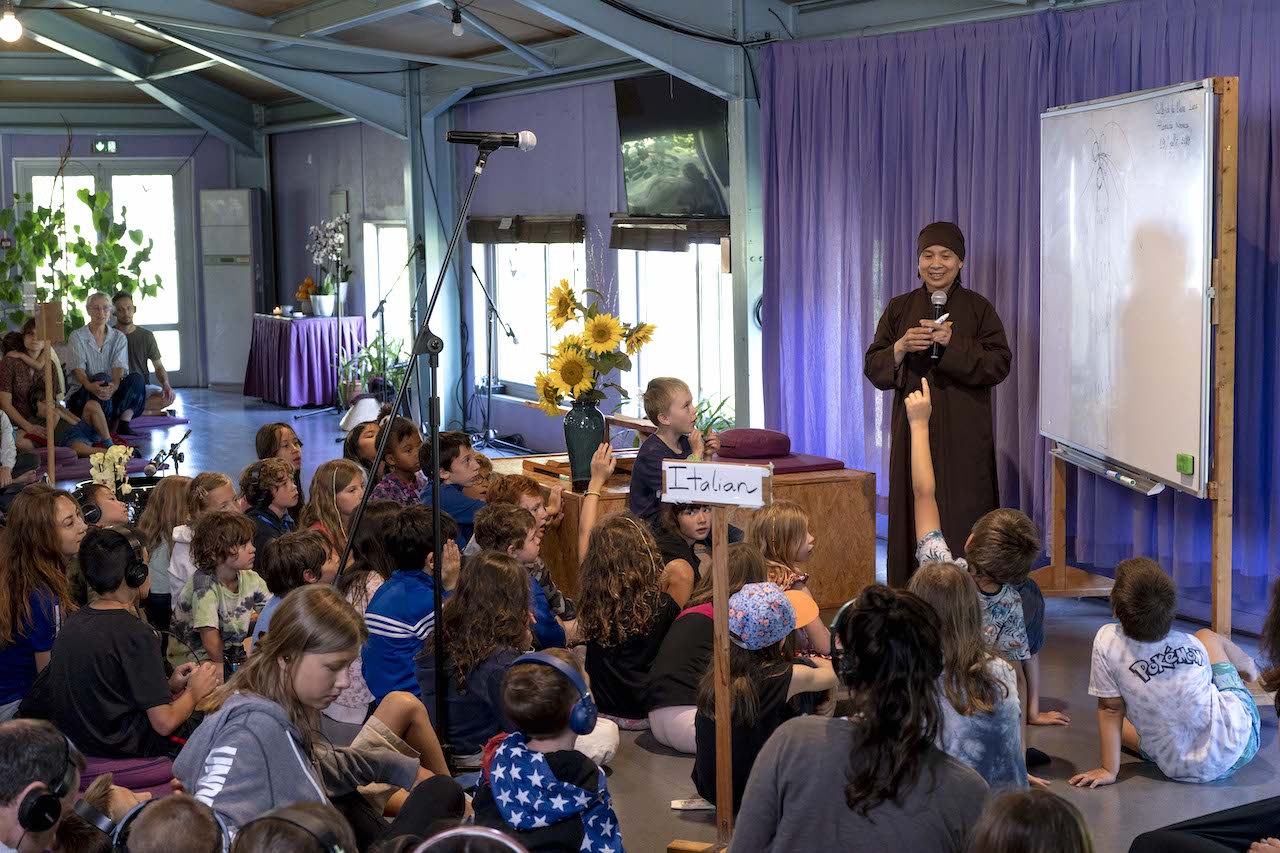We offer you some short verses or gathas to print at home to support your mindfulness practice.
Gathas are short verses that we can recite during our daily activities to help us return to the present moment and dwell in mindfulness. As exercises in both meditation and poetry, gathas are an essential part of Zen Buddhist tradition. Using a gatha doesn’t require any special knowledge or religious practice. Some people like to memorize a favorite verse that they find they can come back to again and again. Others just like to write the verse down in a place they are likely to see it often.
The use of such gathas encourages clarity and mindfulness, making even the most ordinary tasks sacred. Going to the bathroom, taking out the garbage, and chopping wood become acts infused with poetry and art.
Thich Nhat Hanh
The use of gathas goes back for over two thousand years. When Thich Nhat Hanh entered the Tu Hieu Monastery in Vietnam as a novice in 1942, he received a copy of Gathas for Everyday Use, compiled by the Chinese meditation master Du Ti. Du Ti’s. He called it a “warrior’s manual on strategy.”
At Plum Village in France, we practice gathas when we wake up, when we enter the meditation hall, during meals, and when we wash the dishes. In fact, we recite gathas silently throughout the entire day to help us attend to the present moment. One summer, in order to help the children and adults at Plum Village practice mindfulness, we began assembling gathas relevant for life today.
We often become so busy that we forget what we are doing or even who we are. I know people who say they even forget to breathe! We forget to look at the people we love and to appreciate them until it is too late. Even when we have some leisure time, we don’t know how to get in touch with what is going on inside and outside of ourselves. So we turn on the television or pick up the telephone as if we might be able to escape from ourselves.
To meditate is to be aware of what is going on—in our bodies, our feelings, our minds, and in the world. When we settle into the present moment, we can see beauties and wonders right before our eyes—a newborn baby, the sun rising in the sky. We can be very happy just by being aware of what is in front of us.
Reciting gathas is one way to help us dwell in the present moment. We can combine the gatha with our breathing like this:
- Breathe in and recite the first line
- Breathe out and recite the second line
- Breathe in again and recite the third line
- Breathe out and recite the final line
When we focus our mind on a gatha, we return to ourselves and become more aware of each action. When the gatha ends, we continue our activity with heightened awareness. When we drive a car, signs can help us find our way. The sign and the road become one, and we see the sign all along the way until the next sign. When we practice with gathas, the gathas and the rest of our life become one, and we live our entire lives in awareness. This helps us very much, and it helps others as well. We find that we have more peace, calm, and joy, which we can share with others.
We would like to offer you a series of gathas with illustrations that you can print out and put in places you will see easily to help you come back to the present moment. (You can right click and save the images below or download this pdf with all four.)

For example, when you touch a light switch, you can stop for a few seconds to recite this gatha before you turn on the light. Not only will there be light in the room, but there will also be light within you. Dwelling in the present moment is a miracle. Every illusion and random thought will disappear, just as darkness disappears when the light comes on. When we are mindful, we get in touch with the refreshing, peaceful, healing elements within ourselves and around us. Peace and joy are available anytime.
As exercises in both meditation and poetry, gathas are a key part of the Zen tradition. When you memorize a gatha, it will come to you quite naturally when you are doing the related activity, be it turning on the water or drinking a cup of tea. You don’t need to learn all the verses at once. You can find one or two that resonate with you and learn more over time. After some time, you may find that you have learned all of them and are even creating your own.
When Thich Nhat Hanh wrote the gathas for using the telephone, driving a car, and turning on the computer, he did so within the tradition that he inherited from his teachers. You are now one of the inheritors of this tradition. Composing your own gathas to fit the specific circumstances of your life is one wonderful way to practice mindfulness. Please do share with us gathas that you create by yourself.










Join the conversation